
by Terri Cook and Lon Abbott Thursday, May 7, 2015
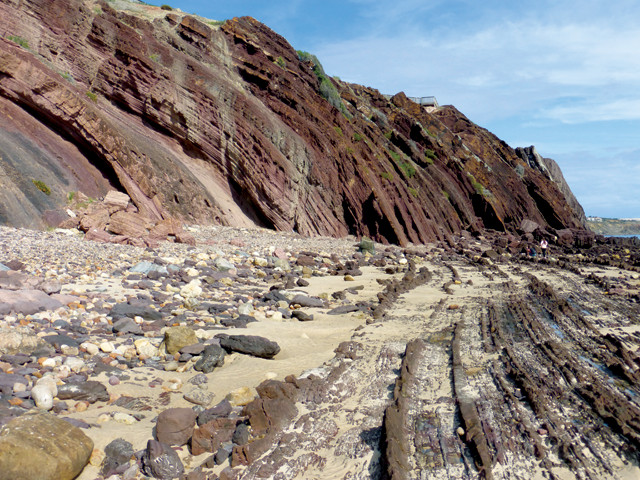
Hallett Cove Conservation Park near Adelaide, Australia, exhibits evidence of a Permian glaciation that occurred when Australia lay at 70 degrees south latitude. Credit: Terri Cook and Lon Abbott.
Without an architecturally stunning opera house, an expansive colorful reef or an iconic redrock outcrop to boast, Adelaide is not usually considered one of Australia’s top travel destinations. But because we love Earth history as well as wine, this town on the southern coast was at the top of our Australian travel itinerary when we found ourselves on sabbatical near Sydney last year. Adelaide is a cosmopolitan city of manageable size, replete with stunning beaches and an especially accessible yet rugged corner of the Outback nearby. Best of all, visitors can observe the handiwork of successive glaciations — which covered the region between 700 million and 280 million years ago — while en route from one cellar door to the next as they tour a world-class South Australian wine region in the picturesque hills just minutes from the city.
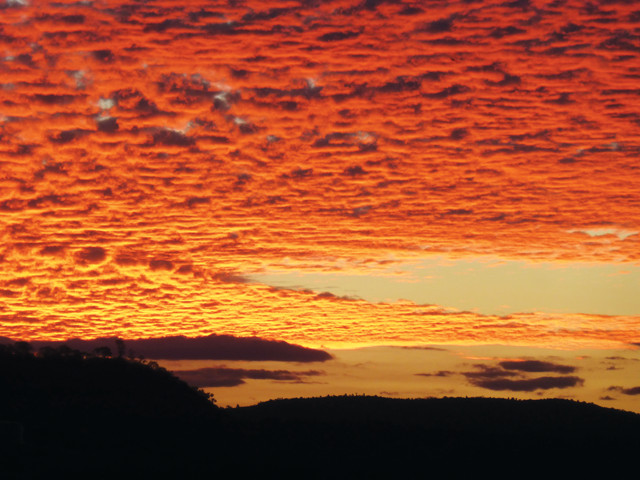
A spectacular Australian sunset. Credit: Terri Cook and Lon Abbott.
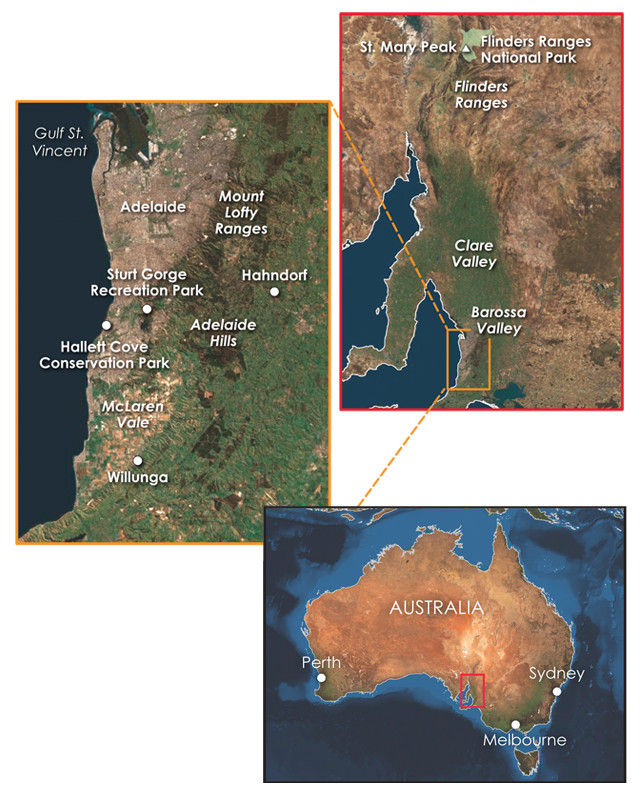
Credit: K. Cantner, AGI.
Two important contributions to a wine’s terroir — the hard-to-define amalgam of natural (and perhaps human-influenced) traits that contribute to a wine’s character — are the climate above and the geology below. Adelaide basks in a Mediterranean-type climate ideal for growing grapes between Gulf St. Vincent — named after the patron saint of viticulturists — and the Mount Lofty Ranges. Topping out at 710 meters, these are commonly referred to as the Adelaide Hills, a more appropriate name for these lovely, but hardly towering, slopes.
Four world-class wine regions nestle in valleys at various elevations and distances from the coast, producing subtle climatic differences that imbue each area’s wines with distinct characteristics. Although the geology of all four areas shares broad similarities, the region’s geologic history is sufficiently complex that the bedrock contribution to terroir varies markedly from one vineyard to the next. And the history of repeated glaciations recorded by area rocks is a reminder that neither people nor grapes would have thrived here in the past.
The geologic story of the Mount Lofty Ranges begins in the interior of the supercontinent Rodinia, predecessor to the more famous supercontinent Pangea. South Australia, East Antarctica, and western North America share geologic similarities so striking that most geologists conclude these regions occupied the same neighborhood in Rodinia. About 870 million years ago, as Rodinia began to fragment, the conjoined Australia-East Antarctica continent pulled away from North America, stretching South Australia’s crust to form the Adelaide Rift. Sedimentary rocks that accumulated in the rift between 870 million and 500 million years ago comprise the Mount Lofty Ranges’ oldest rocks.
Scientists have found evidence that during Rodinia’s fragmentation, Earth was plunged repeatedly into glacial episodes so extreme that the planet’s surface essentially froze over entirely. The first evidence for these “Snowball Earth” episodes was collected near Adelaide. We had the opportunity to examine the type locales for two of the episodes — the 720-million-year-old Sturtian event first identified in the nearby Sturt Gorge and the 650-million-year-old Marinoan event first described in the Adelaide suburb of Marino — while touring the McLaren Vale wineries just 40 minutes south of downtown.
After detaching from North America, Australia and East Antarctica then collided with present-day India and Africa during the assembly of the supercontinent Gondwana, which consisted of all of the current southern continents, plus India. Subduction off the eastern edge of Gondwana, where Adelaide lay, began about 500 million years ago. This subduction folded the Adelaide Rift sediments into a major mountain range, the Precambrian and Early Cambrian Delamerian Mountains. Subduction persisted under eastern Gondwana throughout the Paleozoic and Mesozoic eras, continuing through the amalgamation of Gondwana and Laurasia to form Pangea about 300 million years ago. By 200 million years ago, Pangea, in turn, began to fragment. One of the last stages in that fragmentation was the separation of Australia from Antarctica. The modern Mount Lofty Ranges are bounded by normal faults that facilitated that extension beginning 43 million years ago.
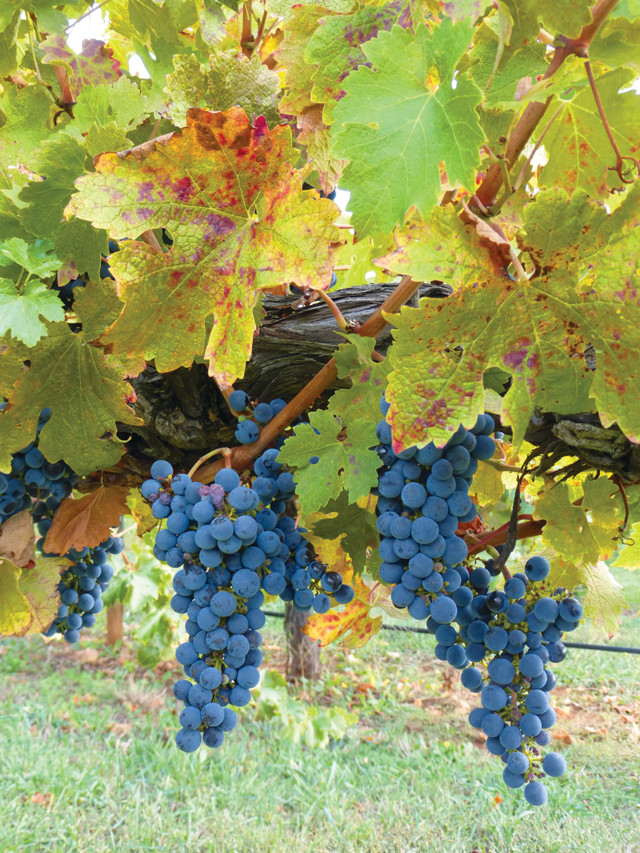
Vineyards in the Adelaide Hills are the highest in South Australia, and thus produce cool-climate wines. Credit: Terri Cook and Lon Abbott.
Adelaide has the diverse array of attractions you would expect in a city of 1.3 million. Highlights include its lush botanic gardens, the Art Galler" of South Australia, and the National Wine Center of Australia, which has a free, interactive “Wine Discovery Journey” exhibition."
While downtown, the South Australian Museum is a must-see for fossil fans. The exhibit “First Life: The Ediacaran Biota Gallery” displays exquisite examples of Earth’s oldest animal fossils, which date back about 600 million years. The geologist Reg Sprigg first discovered them in 1946 north of Adelaide in the Ediacara Hills. Another gallery chronicles the career of University of Adelaide geology professor Sir Douglas Mawson. Although not as famous as Robert Scott, Roald Amundsen or Ernest Shackleton, he was their equal during the heroic age of Antarctic exploration. His epic travails during the 1912–1914 Australasian Antarctic Expedition were so extreme that David Roberts subtitled his book about Mawson’s journey, “The Greatest Survival Story in the History of Exploration.”
In 1949, Mawson was the first to propose that the ancient glacial events that shaped Adelaide had been global in scope. To Mawson, who was unaware of plate tectonics, evidence of glaciation at sea level in Australia indicated that the glaciation must have been global. Four decades later, after the advent of plate tectonics, Caltech geobiologist Joe Kirschvink and a student conducted paleomagnetic analyses that revealed the Australian glacial deposits occurred when the continent was located within 10 degrees of the equator. Kirschvink’s reasoning was similar to Mawson’s. If a Marinoan glacier lay at sea level that close to the equator, what corner of the world could have remained ice-free? Mawson also suggested that the subsequent thaw following the Marinoan glaciation about 635 million years ago catalyzed the evolution of the Ediacaran fauna’s complex animals.
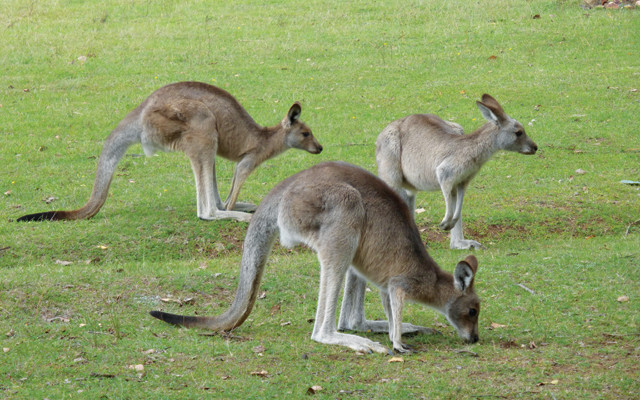
An especially accessible yet rugged corner of the Outback is located near Adelaide. Credit: Terri Cook and Lon Abbott.
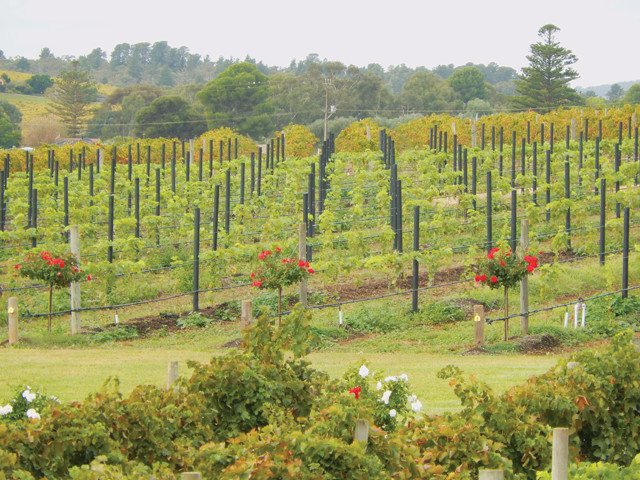
The McLaren Vale vineyards stretch across the Noarlunga and Willunga embayments, both of which are bordered by fault scarps, in the Mount Lofty Ranges. Credit: Terri Cook and Lon Abbott.
McLaren Vale lies just beyond Adelaide’s southern suburbs, 40 minutes from downtown. The vineyards stretch across the Noarlunga and Willunga embayments, both of which are bordered by fault scarps, in the Mount Lofty Ranges. Some vines are rooted in soils atop 750-million-year-old rocks that accumulated in the Adelaide Rift Zone; others grow atop Eocene sandstones shed during the Australia-Antarctica separation; and still others receive nutrients from Pleistocene and Holocene deposits that filled the embayments during the repeated sea-level fluctuations that accompanied the Pleistocene ice ages.
Plan your vineyard tour with the help of McLaren Vale’s website (mclarenvale.info/wine), including its wonderful geology map, which includes detailed information on how the geology influences the wines you taste. We love peppery Australian shiraz, so we took to heart the map’s advice that vines grown on the Eocene and Pleistocene sandstones, thanks to their water-retention capacity, can be dry-grown without irrigation. This results in full-bodied shirazes, McLaren Vale’s most noteworthy variety.
If, like us, you are also a cycling enthusiast, try pedaling the 8-kilometer Shiraz Trail between McLaren Vale and the cute town of Willunga. If you visit in late January, you can watch the Tour Down Under, the weeklong stage race that kicks off the professional cycling season. Typically, the Tour’s decisive stage includes the climb up Old Willunga Hill Road, which tackles the Willunga Fault escarpment.
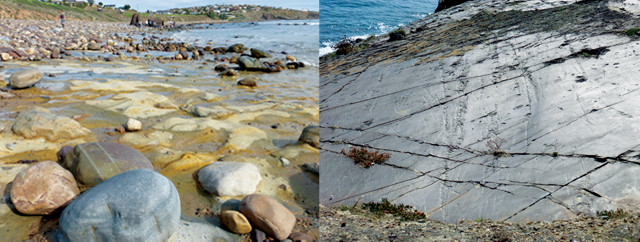
At Hallett Cove, visitors can see enormous boulders eroded out of ancient glacial till, as well as glacial scour marks, striations and smoothing, all evidence of a Permian glaciation. Credit: both: Terri Cook and Lon Abbott.
Despite our kids’ protests — “Do we have to look at more rocks?!” — we made two geology-related stops en route from downtown Adelaide to McLaren Vale. The first was a hike through Sturt Gorge Recreation Park to examine tillite laid down during the Sturtian glacial episode, which takes its name from this site. This was the longest of the Snowball Earth events, lasting 60 million years.
Our second stop was Hallett Cove Conservation Park, which protects evidence of yet another glacial event, this one occurring a mere 280 million years ago in the Permian, when Australia lay at 70 degrees south latitude. Atop the sea cliff above the cove, visitors can admire the scour marks, striations and smoothing of a magnificently developed glacial pavement, which is overlain by glacial till, the poorly sorted material left behind by a glacier.
The pavement is etched into outcrops of 600-million-year-old sandstone and shale that were deposited in the Adelaide Rift and folded during Delamerian mountain building. Together, these features comprise one of the most visually stunning records of Permian glaciation anywhere on Earth. The beautiful setting melted even our kids’ resistance; we spent a delightful few hours walking the boardwalk trails, reading the interpretive signs and strolling the lovely beach littered with cobbles that have eroded out of the soft Permian till.
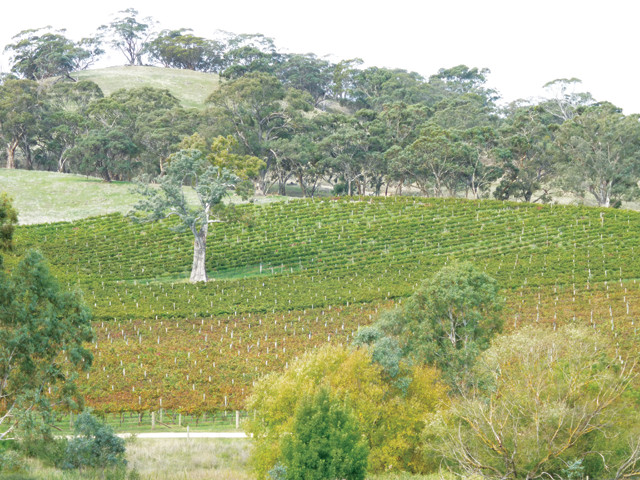
A vineyard in the Barossa Valley, one of the best-known wine regions in the world. Credit: Terri Cook and Lon Abbott.
Two other great day-trip destinations, just 20 minutes and one hour, respectively, from Adelaide, are the Adelaide Hills and Barossa Valley wine regions. The Adelaide Hills are anchored by the quaint tourist hamlets of Hahndorf and Stirling. This important agricultural area also hosts olive groves, fruit orchards and vegetable patches, so you can spend a delightful day visiting wineries and snacking from produce carts set up outside stone cottages.
Early German settlers were the first to grow grapes here. Vineyards in the Adelaide Hills are the highest in South Australia, and thus produce cool-climate wines. European settlers also planted non-native, leafy trees, so a visit during the austral autumn offers more fall color than anywhere else in Australia. Good hiking abounds too, including the 2-kilometer-long hike up Mount Lofty, which culmi"ates with great views of Adelaide and Gulf St. Vincent.
The 25-kilometer-long Barossa Valley is one of the best-known wine regions in the world, producing 21 percent of Australia’s wine. Here, too, the towns have a rich German heritage that dates to 1842, when settlers, carrying their precious vine cuttings, fled religious persecution at home and settled in South Australia. You can still see the stone cottages and gothic churches that attest to this history. A hot-air balloon excursion over the Barossa Valley at sunrise is a memorable experience.
Like in McLaren Vale, local vintners and geologists have teamed up to understand the role geology plays in creating Barossa’s full-bodied red wines with distinctive chocolate and spice notes. The site’s geologic and climatic maps reveal that the Barossa vineyards are underlain by similarly complex geology and some of the same Snowball Earth tillites encountered in McLaren Vale. The results of the “Barossa Grounds” report on the area’s geology are featured on Barossa Valley’s website (http://www.barossa.com/wine/barossa-grounds).
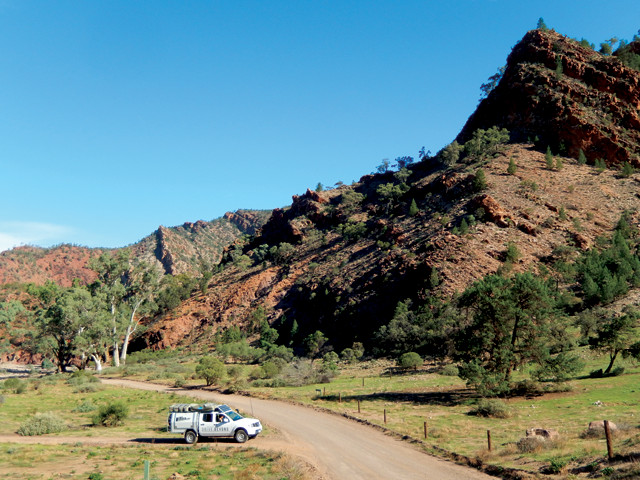
The magnificent Brachina Gorge Geological Trail can be driven with a four-wheel-drive vehicle. Interpretive signs identify each formation in the gorge, which is the type location for the Ediacaran Period (635 million to 542 million years ago), the first new geologic period recognized in 120 years. Credit: Terri Cook and Lon Abbott.
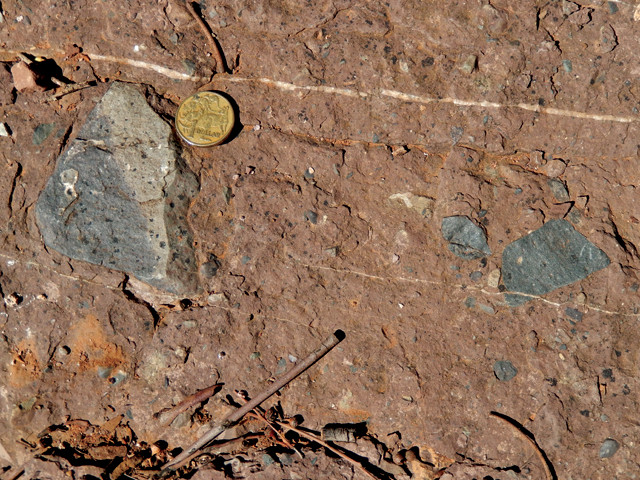
The Elatina Formation, a mudstone containing glacial dropstones that was deposited in a shallow sea by tidewater glaciers during the Marinoan glaciation, played a key role in the modern conception of the Snowball Earth hypothesis. Credit: Terri Cook and Lon Abbott.
The Clare Valley, the northernmost South Australian wine region, lies 1.5 hours north of Adelaide. We stopped here on our way to the (relatively) accessible Outback niche of Flinders Ranges National Park, itself a 5-hour drive from Adelaide on paved roads. Unlike Barossa and McLaren, which are known for their red wines, Clare’s claim to fame is the riesling, a white varietal of grape. While there, you can pedal the 32-kilometer-long Riesling Trail or tour the historic copper mine at Burra. During the 1840s and 1850s, this was the largest metal mine in Australia, producing 5 percent of the world’s copper. The Clare Valley also boasts many well-preserved historic buildings, including a pump engine house that hosts the mine’s museum.
Spectacular hikes abound in the redrock backcountry of the Flinders Ranges. One we especially recommend is the 12-kilometer round trip to the top of 1,170-meter St. Mary Peak, the tallest in the Flinders. From its summit, you have a spectacular view into Wilpena Pound, a natural amphitheater eroded from soft rocks in the center of a bowl-shaped syncline, flanked by mountains formed of resistant Wilpena Group quartzites. You can also drive the magnificent Brachina Gorge Geological Trail on a four-wheel-drive road. Interpretive signs identify each formation in Brachina Gorge, which is the type location for the Ediacaran Period (635 million to 542 million years ago). This period was officially ratified by the International Union of Geological Sciences (IUGS) in 2004, making it the first new period recognized in 120 years. IUGS took this unusual step because of the global evolutionary significance of the Ediacaran biota, which was first discovered nearby. Of special significance is the Elatina Formation, a pebbly mudstone deposited in a shallow sea by tidewater glaciers during the Marinoan Snowball Earth event, which played a key role in the modern conception of the Snowball Earth hypothesis as the source of Kirschvink’s paleomagnetic data.
It’s hard to imagine life getting any better when watching a spectacular Australian sunset over Gulf St. Vincent — the sun’s last rays bringing 280-million-year-old glacial striations into sharp relief — while sipping a single-vineyard South Australian shiraz you’d purchased a few hours earlier from the cellar door. From glaciers to grapes, if, like us, you are passionate about your Earth history and about your wine, there is no better travel destination than Adelaide.
© 2008-2021. All rights reserved. Any copying, redistribution or retransmission of any of the contents of this service without the expressed written permission of the American Geosciences Institute is expressly prohibited. Click here for all copyright requests.